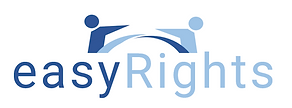easyRights Project in the Direction of the European Union Agency for Asylum (EUAA)
- Laura Gavrilut
- Feb 16, 2022
- 4 min read

easyRights project is now drawing to an end and this is happening at the same time a new European Agency on Asylum (EUAA) is starting to work. This new EU Agency is deemed to become a central hub for European and National administrations dealing with refugees and asylum seekers.
On 19 January 2022, the new Regulation 2021/2303[1] entered into force, following last year’s agreement in between the European Parliament and the Council of the EU on the European Commission’s proposal. It marks the first of the proposals to reform the Common European Asylum System (CEAS) to be approved, and a significant step forward in the modernization of the EU’s asylum and reception practices.
It is worth noting that most of this new EU Regulation tasks cover several policy recommendations provided by easyRights Project. By reading in parallel the new (EU) Regulation 2021/2303 and the outcomes of the easyRights Project, it is striking how these two texts cover the same subjects and aim in the same direction.
First, the easyRights project has been focused on assessing on the ground the current state of management of the EU Asylum policy and second the new Agency will have to take in account the situation on the ground, by establishing an ambitious monitoring mechanism of the application of EU and international law by the national administrations.
Quite interestingly, the future EUAA monitoring mechanism should be “comprehensive”, not only founded on the information provided by the Member State concerned, but, also, on other sources (including Agency’s on-site visits, short-notice visits, information provided by intergovernmental organizations or bodies, in particular the UNHCR, and other relevant organizations on the basis of their expertise). easyRights interviews have shown that these kinds of initiatives on the ground are essential to better measure the efficiency of the public administration.
Finally, in case of weaknesses or shortcomings, specific recommendations could be addressed to each Member State by the EUAA Executive Director, the EUAA Management Board, the Commission and, last but not least, by the EU Council itself.
The easyRights Project has been focused on raising the quality of the public services, as well as the awareness on fundamental Rights, by the national, regional and local administration. At the same time, the new Agency is focused on strengthening the quality of the public administration by providing a compulsory broader asylum training curriculum for national officials, with the goal of developing into the EU’s accreditation body for international protection officials.
This training will not be limited to the public officials in direct contact with migrants and asylum seekers but also “to Member States’ experts from all national administrations, courts and tribunals, and national authorities responsible for asylum matters, including through the development of a European asylum curriculum” (art 2 – Regulation 2021/2303). The “common curriculum” will then become the common administrative ground for the EUAA staff, as well as for “the staff of relevant national administrations, courts and tribunals, and of national authorities responsible for asylum and reception (art. 8 – Regulation 2021/2303).”
Thirdly, considering the content, this training should be focused, mostly, on the European Charter of fundamental rights, as well as on the EU law on Asylum, including specific legal issues and case law, as recommended by easyRights Project. The civil servants, interacting with asylum seekers, should be trained on all the specific needs of migrants, like medical issues, or interpretation and cultural mediation issues, or specific needs of minors and vulnerable persons.
Moreover, as also recommended by the easyRights Project, the training of the public administration should not be limited to general principles of good administration, but should be focused and detailed on the procedures and best practices to be followed.
This is notably foreseen by the new EUAA Regulation 2021/2303, according to which the EU Agency should enable “the production of more practical guides, recommendations, tools and analysis which support the work of national asylum and reception authorities” (art. 2 – EU Regulation 2021/2303). The EUAA Regulation makes explicit reference to “tools”, that could facilitate the work of the public administration. Regulation 2021/2303 could pave the way to the implementation of the main easyRights recommendations, that has developed a digital platform making easier the interaction between the Migrants and the public administration.
As a complement to the information above, it is worth recalling that the new EUAA mandate will cover also other tasks, which comply with recommendations arising from the research of the other Migration Policy Roundtable Projects
These new tasks are notably the following:
allows for the quick deployment of operational assistance to Member States, thus reacting faster to Member State needs;
establishes a permanent asylum reserve pool of 500 Member State officials at the disposal of the agency;
establishes an independent Fundamental Rights Officer to ensure that the rights of asylum applicants are always safeguarded;
gives an enhanced role to Civil Society Organizations through a more independent EUAA Consultative Forum;
establishes EUAA liaison officers in EU Member States, as well as the possibility to do so in non-EU countries;
enhances the agency’s work with non-EU countries to support asylum and reception capacity building in line with international standards;
establishes a complaints mechanism to ensure recourse for anyone who considers that their fundamental rights have been breached.
The Monitoring Mechanism will allow for the EUAA to monitor the operational and technical application of EU legal obligations. This will help Member States identify potential lapses in their asylum procedures in a constructive manner and contribute to a more harmonized EU asylum system.
By Paola Regina




Comments